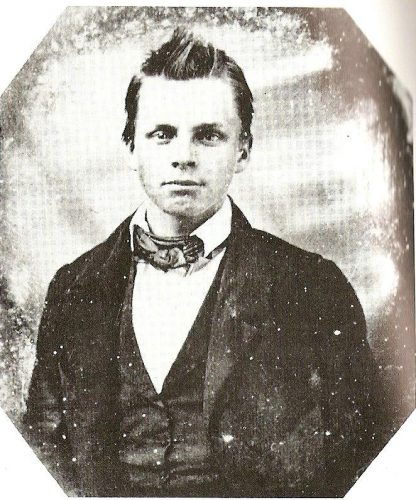
The sun dawned slowly upon a grim scene. It was December 13, 1862. The rising sun painted the fog of the Rappahannock River a ghastly red, foreshadowing the bloody day that was to come. Lee was up early, surveying the scene from the top of Marye’s Heights. Across the river, on the other side, Northern Generals were peering toward Lee’s position, hoping to drive the Confederates from those hills and fulfill Burnside’s promise of celebrating Christmas in Richmond.
As the morning wore on, the fog began to burn away under the influence of the rising sun. The lifting fog revealed to the Confederate commanders the surging ranks of the Federal infantry, forming for a massive attack on the Confederate right. From their post of observation, James Longstreet turned to Stonewall Jackson and asked, “What are you going to do with all those people over there?” Jackson answered firmly as he mounted his horse, “Sir, we will give them the bayonet.”
After Jackson had ridden back to his command, he ordered JEB Stuart to deploy his horse artillery against the advancing enemy in order to slow the Federal advance. Stuart told John Pelham, his young artillery officer, to prepare for action.
Pelham had proven himself faithful before. In the battles around Richmond, earlier that spring, Pelham had earned the confidence of Stuart and the admiration of Jackson for his ability to maneuver his light artillery with precision and accuracy. Jackson had famously declared, “If I had a Pelham on each flank, I could whip the world.” He had gone on to ask Stuart, “If you have another Pelham, send him to me.”
Today would be Pelham’s greatest test. Pelham selected two cannons for the task at hand, a Blakely rifle and a twelve-pound Napoleon. Stuart’s troopers cheered as Pelham boldly led his small detachment forward to slow the Federal advance. At a crossroads in the front of the Confederate position, Pelham unlimbered his guns and opened on the Federal lines with solid shot. The accurate fire sent shock and confusion into the Federal infantry. Pelham had an ideal position from which he could enfilade the Union lines. Each cannonball went bouncing along its path of destruction, tearing off arms, legs, and heads as it cut a path right through the enemy lines. He was fighting an entire division of infantry with only two guns.
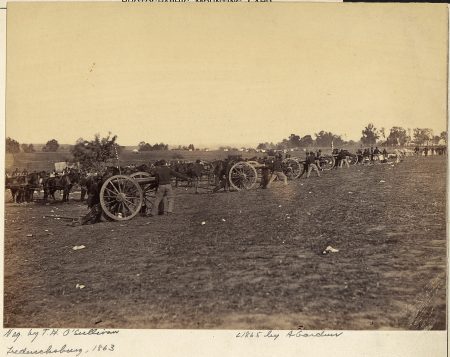
For only a few terrific minutes did Pelham enjoy the thrill of surprise. On the hills beyond the river lay the Union artillery. Soon, the Union guns had found their range and were returning fire against Pelham’s exposed position. It was a terrible counter fire from the Northern hills. Pelham’s Blakely rifle was quickly put out of service by an exploding shell. Undaunted, Pelham ordered his men to return doubled fire from his one remaining cannon. Thirty-two pieces of heavy Union artillery were now bombarding his position with savage fury, but Pelham calmly continued his work against the Federal infantry, buying Jackson precious time to meet the infantry attack. JEB Stuart, anxious for Pelham’s safety, sent a courier galloping forward with the message that he had already succeeded in his mission and that he could withdraw his gun. Pelham sent the same courier galloping back with his reply, “Tell the General I can hold my ground.”
Both sides watched in awe as the young artillery officer continued his fight. His men were dropping all around him. When one of the key artillerists was cut down by Union fire, Pelham himself filled the fallen soldier’s post and worked the gun with his own hands. Again, Stuart sent a message giving permission to withdraw. Again, Pelham replied that he could and would keep his post. From Marye’s heights, the field glasses of Robert E. Lee were focused upon the lone Napoleon that was keeping up such a heroic fight against such heavy odds. Lee inquired to whom the gun belonged. On receiving word that it was John Pelham with Stuart’s horse artillery, Lee said, “It is glorious to see such courage in one so young.”
Only when his ammunition was expended and Stuart had sent a third message to withdraw did Pelham pull his exhausted men back to the Confederate lines. He had delayed the Federal advance for more than an hour, giving Jackson the time he needed to prepare his infantry for the massive assault. Pelham’s services were far from over, and he spent the remainder of that bloody day supporting Jackson’s right flank with the fresh remnants of his horse artillery. From that day onward, John Pelham was known as “The Gallant Pelham.”
Although Pelham was one of the most famous officers in Lee’s army, he was a consistent and humble Christian. He had the youthful appearance of a boy, and his beardless cheeks would blush whenever he received praise. He was the son of a medical doctor from Alexandria, Alabama. His parents were firm Christians who raised their son to love the Lord Jesus and live by the Word of God. Throughout his life, he carried with him a Bible given to him by his Godly mother.
John Pelham had been accepted at West Point and was very near his graduation when Alabama seceded from the Union in the spring of 1861. He left West Point only two weeks before he would have graduated, and cast his lot with his native state. Joining the militia in Alabama, he had been sent to Virginia where he was commissioned as a lieutenant in the artillery. His skill and discipline attracted the attention of James Ewell Brown Stuart, who requested that Pelham assist him in organizing a “horse artillery” to be attached to his cavalry.
John Pelham developed new artillery tactics in the course of the war, pioneering concepts that would later be embodied in tank warfare and in aerial bombardment. He made his artillery fast and flexible, and his mounted artillery performed many daring feats in the battles around Richmond, in Stuart’s famous rides around the Union Army, in the Sharpsburg campaign, and most famously at the Battle of Fredericksburg. Throughout the war, he participated in over 60 engagements, gaining the admiration of his commanders and the love of his men.
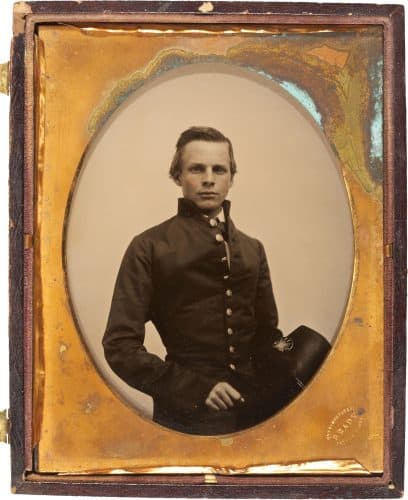
On March 17, 1863, John Pelham was mortally wounded in a minor cavalry skirmish at Kelly’s Ford. Although his artillery was not engaged in the action, “The Gallant Pelham” could not sit idly by while his cause was in danger. His discerning eye detected a weakness in the Union position, and he drew his saber and called for the Confederate horsemen to follow him in a charge. While leading his men forward, he was hit by a piece of shrapnel which penetrated his skull.
Pelham was carried to a nearby home where he died only a few hours after receiving his wound. JEB Stuart grieved over the fallen officer who had become, not only a trusted brother in arms, but a dear personal friend. In his official order to his Cavalry Corps, Stuart said of Pelham, “His noble nature and purity of character is enshrined as a sacred legacy in the hearts of all who knew him. He fell – the noblest of sacrifices – on the altar of his country.”
General Stuart sat down in his tent to write a personal letter to Dr. Pelham telling him of his personal admiration for his son, and offering the grieving father a warm testimony of his son’s Christian faith. He told Dr. Pelham, “I attended church with him on the Sabbath preceding his death and marked his close attention to the Word. Often I have seen him reading the Sacred Volume, and I doubt not in its sacred truths the young soldier found hope of a bright immortality above.”
John Pelham’s body was taken to the Confederate Capitol in Richmond, where it lay in state as grieving men, women, and children came to pay their respects to the fallen hero. A two-week funeral procession led through many of the Southern cities where multitudes came to the train station to salute Major Pelham of Stuart’s Horse Artillery.
It was a moonlit Saturday night in late March when the body finally came back to his parents’ home in Alabama. As the procession entered the yard, the father and sister were crying and did not feel able to come out of the house. It was the boy’s mother, Mrs. Pelham, who came out onto the porch to welcome her son home. She directed that her boy be laid in the parlor, where the rays of the sun would shine through the window on his face as the Lord’s Day dawned.
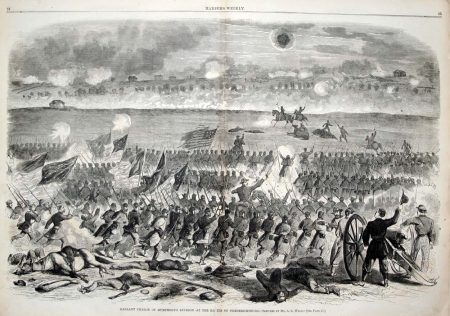
Bibliography
John Pelham of Alabama by Dr. H. Rondel Rumburg
Lee’s Lieutenants by Douglas S. Freeman
I Rode with JEB Stuart: The Life and Campaigns of J.E.B. Stuart by Henry B. McClellan


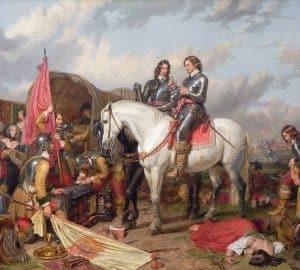

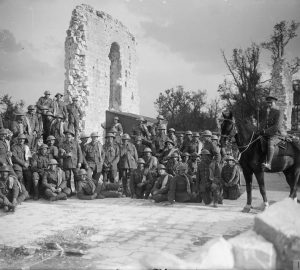
How I wish I could have seen the meeting in Heaven of Pelham and Shelby Foote!
A true American–loyal, courageous, and God-fearing. It angers me to read that some ignorant fools in our country brand such people as traitors for defending their homes from invaders.
What other 60 engagements was he involved in? I can’t find any NPS ranger where I am to even find any documentation. All they say is 1st battle of Manassas, Antietam, Fredericksburg, Kelly’s Ford etc. Just the major ones
John may chime in here with more information, but I’d guess that would count a lot of skirmishes so small that they don’t even have names.
Thanks for your comment!
Thanks, Ron, for your question. I recommend you read McClellan’s biography of JEB Stuart or Rumburg’s biography of Pelham to read about a few of these exciting little skirmishes at places like Catlett’s Station, Chantilly, Aldie, Upperville, Hamilton’s Crossing, and dozens of others. Some of these skirmishes never made it into the major history books, but they were very significant and deadly for the cavalrymen involved. Another great resource is Glory at a Gallop: Tales of the Confederate Cavalry by Brooksher and Snider.